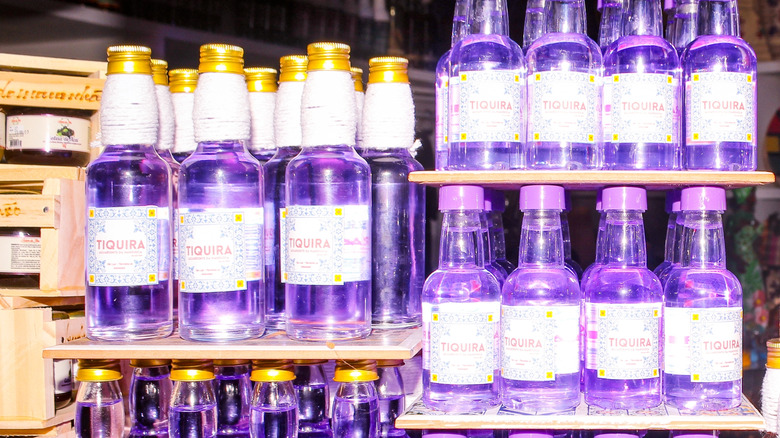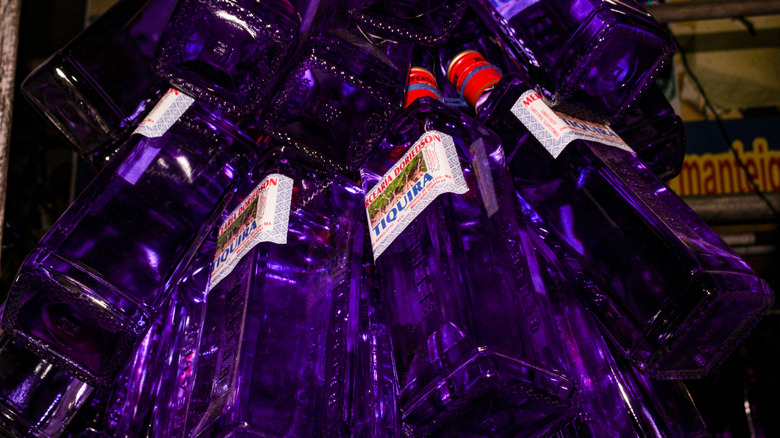The Ingredient That Makes Brazil's Tiquira Liquor Purple
You may be familiar with cassava. Perhaps you have found that using cassava flour is your best weapon against soggy gluten-free bread, or maybe you recognize it from the little balls in tapioca pudding. But in the state of Maranhão, in Brazil, the plant is also used to make a lesser-known liquor called tiquira. As the oldest spirit in Brazil, tiquira can be found at markets in Maranhão, often produced by moonshiners, though at least one company, Guaaja, produces the brandy-style beverage legally. The pleasant flavor profile includes undertones of nuts, caramel, vanilla, and dried fruit, but its typical appearance may be what draws some buyers in — many tiquiras are often a bright purple color. Since cassava sports a brown exterior and its inside is white, the color of tiquira is clearly not from the root vegetable itself, which begs the question: how do makers achieve the purple hue?
Many say that the purple liquor gets its vibrancy from the use of mandarin leaves — specifically tangerine — during production. However, if it is distilled with the leaves, it is not recognized by the country's Ministry of Agriculture. It has also been suspected that some distillers may use an artificial means of coloring the spirit. That suspicion was confirmed in 2005 when a scientific study revealed the presence of crystal violet (also known as methyl violet), a toxic dye, in a small sample of publicly available bottles of the beverage.
Background on tiquira and how to drink it
Tiquira has been produced in Maranhão for thousands of years, so it's no surprise that it became a staple at celebrations, from tribal festivals to large gatherings. It has also been considered medicinal but has a storied history of attempts by the government to stymie its production and consumption. However, in recent years, it has been recognized as a Cultural and Intangible Heritage of Maranhão.
The best way to get your hands on this liquor is, of course, by making a trip to Maranhão. And if you're concerned about those dyes, turn to the Guaaja brand, or bars that serve it, for a more pure version. But if you're lucky enough to find yourself in possession of a bottle, there are a number of ways to serve it up. Of course you can serve it neat, but keep in mind that it has an ABV of 38-54%. It can also be mixed into cocktails. Try mixing it with fruit juices like grapefruit, lime, or cranberry or make it bubbly with a splash of ginger ale (make homemade ginger ale for an even more special drink). Or, take a page out of tradition, and suck it out of cashews that have been soaked in it.


